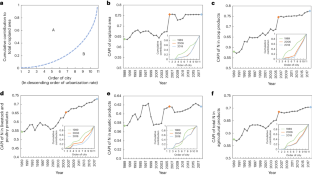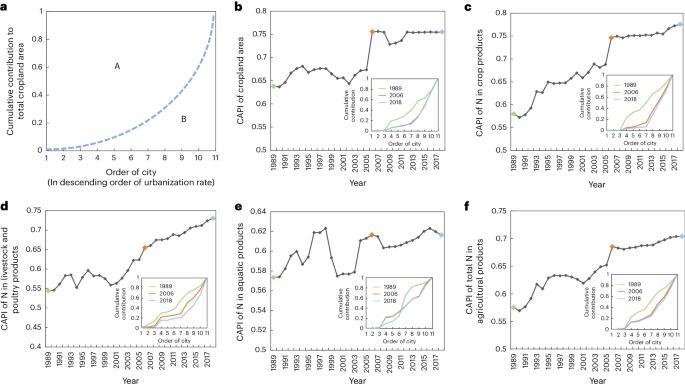Uneven agricultural contraction within fast-urbanizing urban agglomeration decreases the nitrogen use efficiency of crop production
IF 23.6
Q1 FOOD SCIENCE & TECHNOLOGY
引用次数: 0
Abstract
Diverse development paths among cities within an urban agglomeration can lead to uneven changes in their agricultural production scale, which reshape the inter-city food supply patterns and the spatiotemporal characteristics of nitrogen (N) pollution from the food system. Here, using Guangdong–Hong Kong–Macao Greater Bay Area of China as a case, we found a substantial decrease in N use efficiency of crop production from 45.2% to 29.3% during 1989–2007, along with a growing level of concentration of food N production in less-urbanized cities. From 1989 to 2018, 12.3% to 42.2% of total N pollution in food production became embedded in inter-city trade, leading to aggregation of N pollution in peripheral cities with relatively low levels of economic development. We suggest that protection and intensification of cropland from urban encroachment, as well as enhancing the economic and technical synergies among cities, can serve the sustainable transition of the food system with coordinated N pollution mitigation. The food system of urban agglomeration undergoes continuous transitions and poses changing pressure to the environment, especially in terms of nitrogen (N) pollution. This study highlights the decreased N use efficiency and intensified local N pollution in the context of uneven agricultural contraction in urban agglomeration and reveals how cities can leverage synergies for coordinated N pollution mitigation.


快速城市化的城市群内不均衡的农业收缩降低了作物生产的氮利用效率
城市群内各城市的不同发展路径会导致其农业生产规模的不均衡变化,从而重塑城市间的粮食供应模式和粮食系统氮(N)污染的时空特征。在此,我们以中国粤港澳大湾区为例,发现在1989-2007年期间,农作物生产的氮利用效率从45.2%大幅下降到29.3%,同时粮食氮生产越来越向城市化程度较低的城市集中。从 1989 年到 2018 年,12.3% 到 42.2% 的粮食生产氮污染总量都是由城市间贸易造成的,导致氮污染向经济发展水平相对较低的周边城市聚集。我们建议,保护和集约耕地以避免城市侵占,以及加强城市间的经济和技术协同,可以通过协调减轻氮污染来服务于粮食系统的可持续转型。
本文章由计算机程序翻译,如有差异,请以英文原文为准。
求助全文
约1分钟内获得全文
求助全文

 求助内容:
求助内容: 应助结果提醒方式:
应助结果提醒方式:


